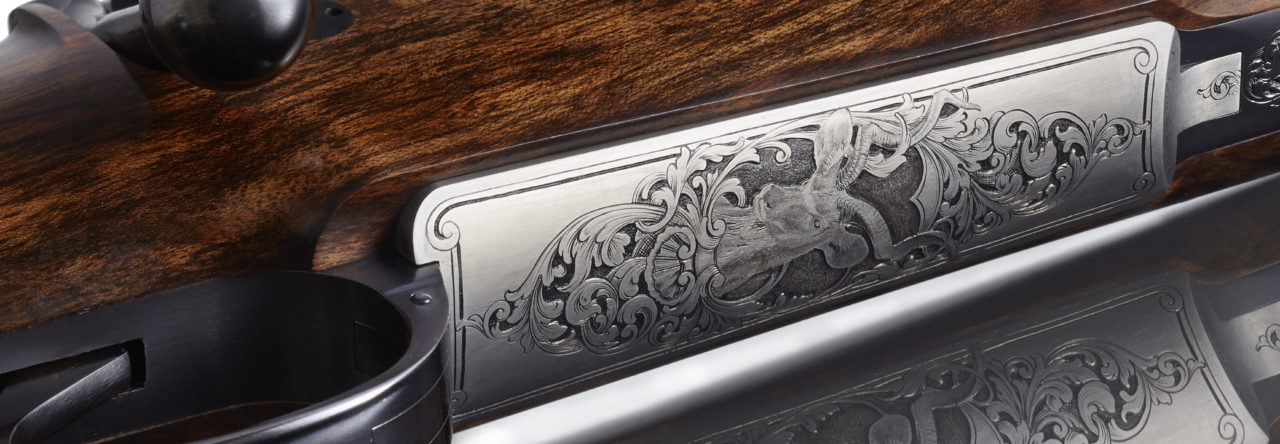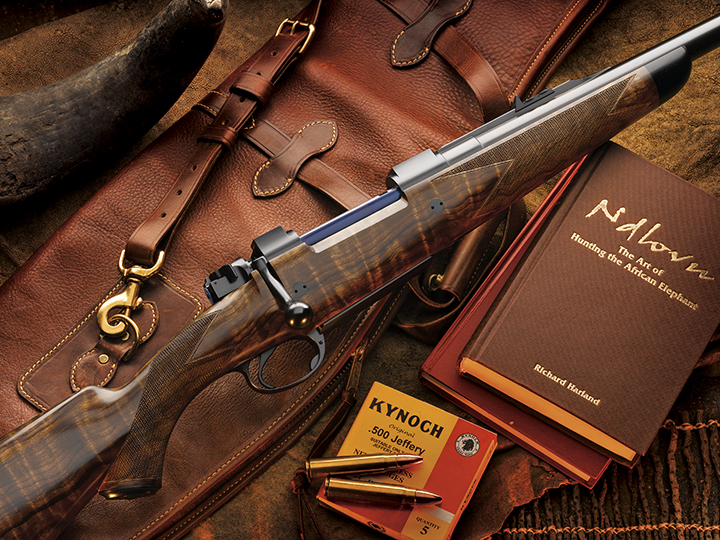
Buying a stock blank for a custom gun project can be a little daunting. I usually assist my clients in finding a stock blank that appeals to their taste, is within their budget, and is strong and stable. Currently I don’t have many available rifle blanks in my shop, but I do have a very nice collection of two-piece stock blanks for sale. I have a network of wood dealers and they update me regularly on their inventory. Pictures of the blanks that I find suitable I pass on to my clients.
As you may know, there are different types of walnut. I prefer to work pretty exclusively with English walnut. English walnut is generally stronger then Black walnut, Claro and Bastogne. While these types are fine for certain applications, I don’t think they are well suited for a rugged bolt action rifle. Most of the English walnut on the market today comes from Turkey, some from Russia and other Middle Eastern regions. California-English walnut has been mostly logged, but some nice blanks still come up for sale. Each piece of walnut varies in weight and density. I’ve seen a weight difference as much as 9 ounces between two identical stocks.
For a nice English stock blank, you are looking anywhere from $750 to $3000. I would say the blanks used for my custom rifles average at $1400. No question, the prices of blanks have been increasing and the supply has been dwindling. As there is no precise formula for the pricing of stock blanks, often the price is determined by the eye of the beholder. A high price tag does not always mean that it is the best and nicest blank. In choosing a blank, here is what I look for:
- Age: The blank should have been stored for a minimum of 4 1/2 years after harvesting and before using it for a gun stock. It takes at least that long for it to stabilize.
- Moisture content: About 8 – 10 %. Depending on the climate, this varies. I’m more concerned with the age of the blank. We have a low humidity in Southern Oregon, and the blanks dry pretty fast.
- Cut: Typically there two types of cut. Flat sawn and quarter sawn. Looking at the end grain (front and back) of the blanks, if the lines go sideways, it’s quarter sawn. If the grain lines flow vertical, it has been flat sawn. I’m not convinced that one cut makes for a stronger blank over the other. But it is considerably easier to predict the final appearance of the stock with a quarter sawn blank.
- Top view and bottom view: Just as important as the side views are the top and bottom views of the blank. Often the dealers don’t show it on their websites. It is very important that the grain flows straight and does not curve to one side. Should the forearm warp for any reason, it would probably move in the direction of the flow.


- Grain flow: What I’m looking for is a straight flow through the grip and magazine box. On the forearm the grain should go slightly up, towards the barrel. Behind the grip, it really is not that important, but I have seen broken off toes because of bad grain flow. You might want to pay attention to it, especially if a steel butt plate is to be installed.

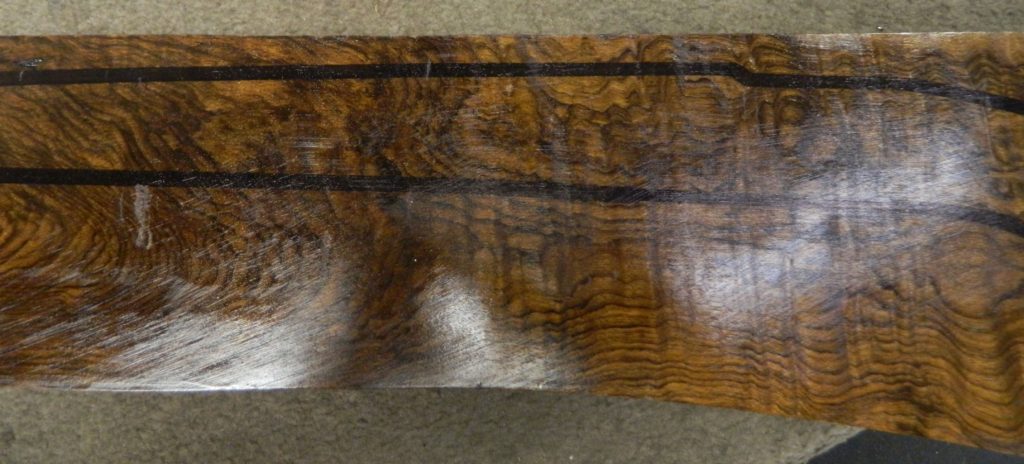
- Color: A natural warm color is always ideal. Staining can help, but is tricky and the results are not always the best. Tastes vary of course when it comes to the wood color. I very much prefer dark mineral lines over brown ones. Again, a matter of personal taste.
- Fiddle back: Fiddle back are the finger like lines going from top to bottom. To me, it is an added bonus and gives a beautiful 3D effect.
- Imperfections: It’s wise always to be on the lookout for knots. And sometimes little holes can turn into big problems.
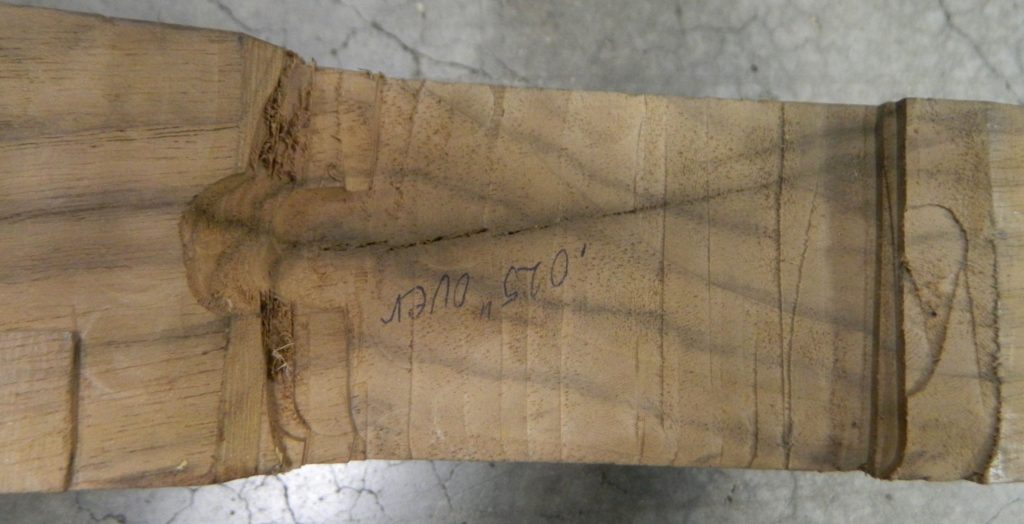
- Price tag: I shudder when I see a blank with a big price tag but terrible grain layout. Walnut is a very strong material, but a bad grain flow will weaken it for sure. Not everything that glitters is gold.
I made a couple of plexiglass stock templates that are a great aid in determining the layout of the stock. The dealers sometimes outline the stock contour onto a blank. Often I don’t follow their layout. Keep in mind, they have experience in wood cutting but probably not in stock making.
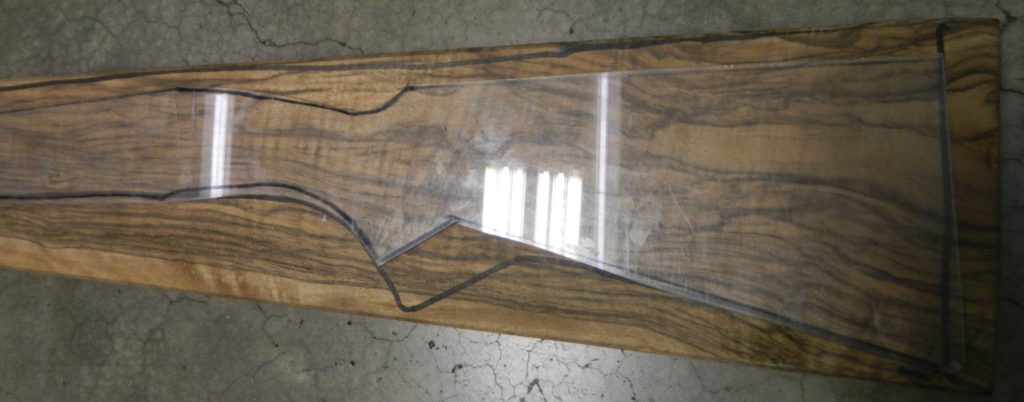
For good examples of grain flow and stocks check out the guns on my website:
